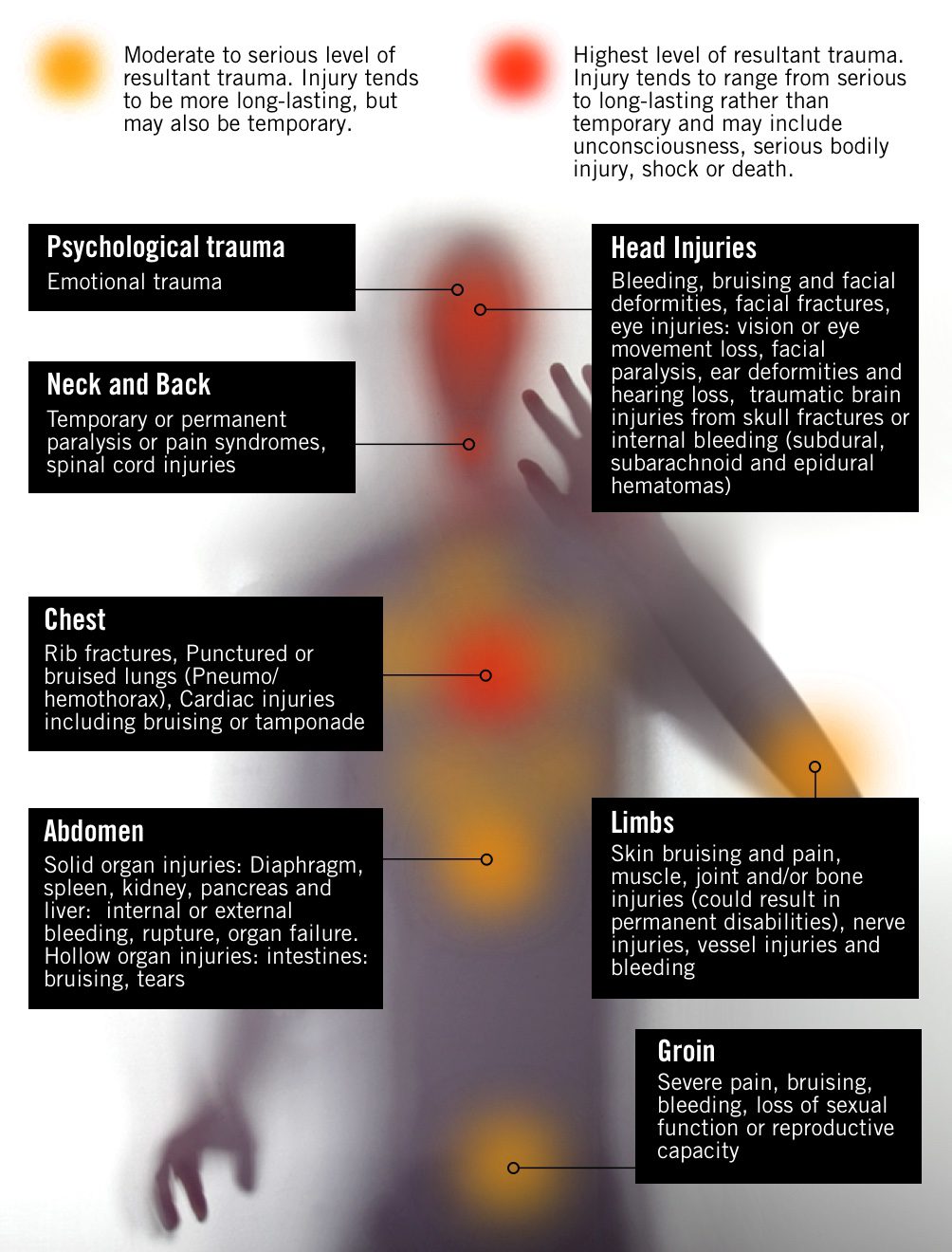Time and again, law enforcement officials are too quick to resort to the use of force, often against peaceful protesters exercising their rights to freedom of peaceful assembly.
In recent years and throughout the Covid-19 pandemic, states have restricted the rights to freedom of peaceful assembly and freedom of expression, often violently. Civic space is shrinking. Among the most frequently used and misused weapons in this context are police batons in different forms and sizes.
Amnesty International has investigated the misuse of batons and other striking weapons, analysing illustrative incidents spanning the past decade from around the world. Examining hundreds of photos and videos, researchers have verified 188 incidents of the misuse of striking weapons including police batons, lathis (long sticks), sjamboks (rigid whips) and improvised weapons in 35 countries, covering all regions of the globe. These include examples from violent crackdowns of mass protests in countries as diverse as Belarus, Colombia, France, India and Myanmar.
Why Amnesty is campaigning to regulate the torture trade
Batons have been used to inflict beatings as a means of punishment, beat people who are already restrained, deliver unjustified dangerous head and neck strikes, and choke people in neck holds. Single baton blows have been delivered with such force that the victims have collapsed to the ground. Incidents documented also include batons being used to commit sexual violence.
Download Summary
Amnesty International’s Crisis Evidence Lab and Digital Verification Corps, based at six global universities, analysed more than 500 photographs and videos, identifying and verifying the final 188 illustrative incidents showing instances of security forces using striking weapons and other less lethal weapons and equipment in a manner that amounts to torture or other ill-treatment.
Less lethal weapons and equipment are intended to allow law enforcement officials to use the minimum level of force according to circumstances and avoid using lethal force. Some less lethal weapons and equipment can have a legitimate use in law enforcement if employed correctly and in line with international standards for law enforcement. Yet such equipment can have unintended dangerous and even lethal effects if not used in compliance with human rights standards and is also open to abuse.
Amnesty International has documented its misuse in all regions of the world – in many instances against protesters exercising their right to freedom of peaceful assembly.
Health implications of baton strikes
Baton injuries can range from characteristic abrasions, bleeding and bruising to more severe injuries including bone fractures, nerve/muscle damage and internal injuries that may result in permanent disability or death. Injury patterns and severity are dependent on the location of the strike, the amount force used, and the type of baton.

Police forces across the world are equipped with a range of less lethal equipment – such as tear gas and pepper spray, batons, plastic and rubber bullets, and water cannon – which is regularly deployed in the policing of public protest.
For decades, Amnesty International has been documenting how these weapons are used to abuse human rights. In June 2020, Amnesty launched a major investigation into the misuse of tear gas, documenting abuse in 22 countries and territories. Blunt Force focuses on striking weapons, such as police batons, which are widely misused across the world.
This equipment is the simplest – and commonest – type of less lethal weapon. Striking weapons come in many shapes and sizes and different materials. They include not just police batons and sticks, but also whips, which are inherently abusive. Striking weapons are routinely used in intimidatory, aggressive acts of force leading to physical and psychological trauma.
Batons are currently traded with no regulation. There is an emerging opportunity to create a global, legally binding instrument at the UN that prohibits the trade in inherently abusive equipment and places strict human rights-based trade controls on other equipment, like batons – which can serve a legitimate function, but that as our research shows, can also be used for acts of cruel, inhuman and degrading treatment, and even torture.

0 Comments